On a summer night in June 1942, Brotherhood of Sleeping Car Porters leader A. Philip Randolph approached the microphone before an electric crowd of mostly black Harlemites at Madison Square Garden. Eighteen thousand people had jammed into the stadium to attend a mass rally of the March on Washington Movement (MOWM). Organized by Randolph, the gathering highlighted issues of discrimination in defense jobs, segregation, and lynching.
One of the many things attendees were anticipating was the announcement of Mayor Fiorello LaGuardia’s first black appointment to the New York City Housing Authority (NYCHA). Many thought it would be Randolph. But instead, a less familiar figure was named: black socialist and labor activist Frank Rudolph Crosswaith.
Crosswaith never attained the same recognition as other early black socialists, such as Randolph or Hubert Harrison. But he played a critical role in building support for both trade unionism and socialism among black Americans and in forging the institutional links between the labor movement and early civil rights organizing.
Throughout his long and productive life, Crosswaith never wavered in his belief that a strong interracial labor movement and democratic socialist policies were the best antidote to the fundamental problems facing black people. Even more importantly, Crosswaith — dubbed the “Negro Debs,” after socialist trade unionist Eugene Debs — was an embodiment of the need to put these ideals into practice by building robust working-class institutions.
A Young Socialist
Like so many other early twentieth-century black radicals, Crosswaith hailed from the Caribbean. Born in the Virgin Islands in 1892, he left at the age of fifteen to join the US Navy. Unbeknownst to him, his move to Harlem to live with his godfather in 1910 would put him at the center of a vibrant black political culture.
Crosswaith attained a level of basic financial stability when he got a job as a porter at the men’s tailoring firm Zeeman and Grossman. From this firm footing, he launched himself into political activity and self-education. He began attending classes at the University Prep School of Harlem, where he was radicalized by reading writers such as Thomas Paine and Charles Darwin. By 1915 the budding leftist had joined the Socialist Party.
Crosswaith’s socialist education accelerated when he enrolled at the Rand School of Social Science, where he took classes such as “The Fundamentals of Socialism” and honed his public speaking skills. Importantly, the Rand School also allowed him to establish contacts with local leaders in both the Socialist Party and the labor movement.
It was during this period when Crosswaith began his deep collaboration with A. Philip Randolph, by then an established Socialist leader. Randolph had organized the party’s Twenty-first Assembly District local, located in the heart of Harlem. Crosswaith lived and worked in this district, which the Socialist Party considered the first “Negro branch of the party in New York.”
By 1917, Crosswaith had also become part of the core group that produced the Messenger, the black radical magazine that Randolph coedited. This cohort also included black socialist heavyweights such as Harrison, Chandler Owen, and journalist George Schuyler. They often found themselves in direct conflict with other highly regarded leaders such as W. E. B. du Bois, who they saw as too moderate and too unfocused on the black working masses.
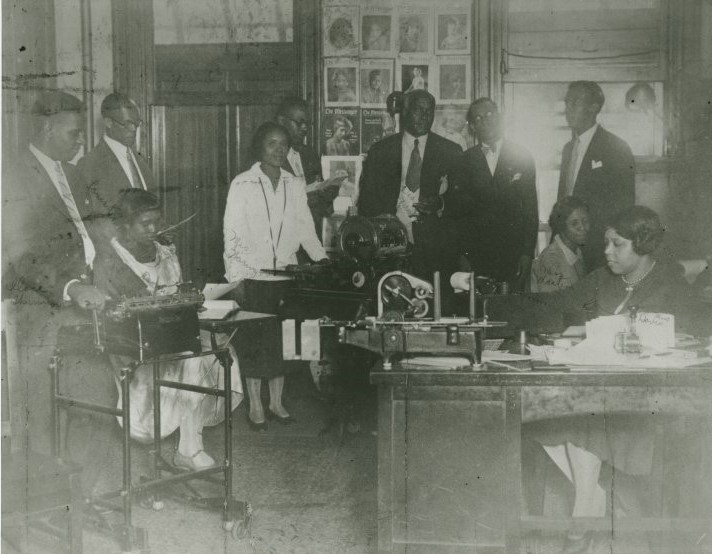
The Messenger magazine staff at work, 1920. (New York Public Library)
Meanwhile, Crosswaith and his socialist comrades faced the daunting task of trying to win black workers away from both the black nationalist appeals of Marcus Garvey and the hegemonic hold of the Republican Party machine. Electoral campaigns at all levels of government were a significant component of the party’s activities, and Crosswaith was early on recognized as the best candidate for the Twenty-first Assembly District. His first experience as a candidate came in 1922, when he received the joint nomination from the American Labor Party and the Socialist Party to run for Congress.
The young Harlemite, rail-thin and bespectacled, proved himself an energetic and impressive campaigner. The New York Call, a socialist newspaper, described Crosswaith as
a brilliant speaker and an intelligent debater, the logical choice of the Party in Harlem for Congress in the great fight to win over the masses from Garveyism on the one hand and blind allegiance to the Republican Party on the other.
While he only received 2,046 votes, the party continued to run Crosswaith in the district in most elections until 1938.
By this point, Crosswaith’s political work had become all consuming. And his employer noticed. He was eventually fired from his porter job for his Socialist Party association. This was a blessing in disguise, however, for it freed Crosswaith up to pursue his chief passion: organizing black workers into labor unions.
Organizing Black Workers
As a socialist, Crosswaith insisted the only way black workers could improve their lot was to join the labor movement and organize with other workers across racial and ethnic lines. Still, he recognized the wide gap between this historic necessity and the reality of racial discrimination in the existing craft unions of the American Federation of Labor (AFL). Crosswaith, now in his thirties, set out to bridge that gap.
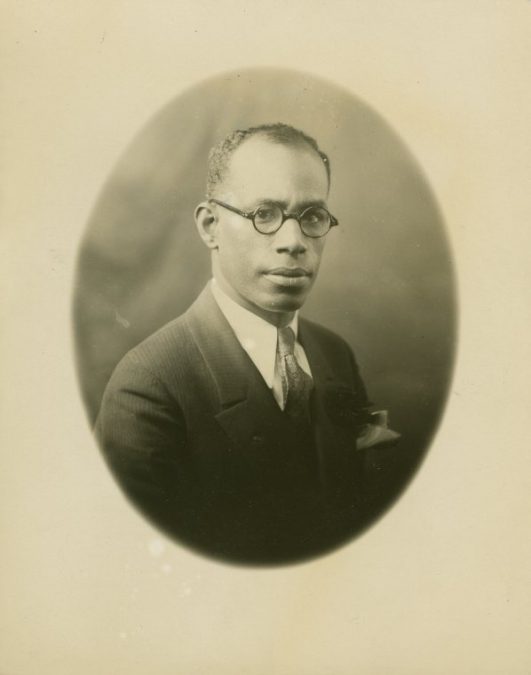
Frank R. Crosswaith, labor organizer and socialist political activist. (New York Public Library)
In October 1923, he joined Local 67 of the Elevator Operators and Starters Union. The following year, he was tapped to work as a staff organizer. The union’s membership was mostly white, even though most of New York City’s elevator operators were black. In just a few months, Crosswaith helped boost the number of black members from twenty to five hundred. As reward for his work, Crosswaith was elected vice president of the local.
Seemingly poised for a career with the union, things turned sour quickly. His election was overturned based on flimsy claims of irregularities in balloting. In the revote, he lost by a margin of just six votes and then resigned as an organizer. Despite this disappointing end, the experience demonstrated to Crosswaith that it wasn’t impossible to organize black workers into a white-dominated union.
Again out of a job, Crosswaith took to writing to earn a living and clarify his own political views. One product of that intellectual labor was a groundbreaking study, Black Man’s Burden: Harlem Doubly Enslaved by Color and Capitalism, in which he elaborated the many ways African-American workers in Harlem were exploited by different interests.
Crosswaith didn’t shy away from critiquing trade unions in the pamphlet, writing that “all of them show practically no desire to unionize the Negro worker except during the period of a strike when he is used by the employer against the union.” But white racism was not his only target, for he also declared that black workers were “gouged by the capitalist-minded Negro, who makes his appeal on the basis of race.”
These years were very difficult for black socialists like Crosswaith. The appeal of Garveyism, with its race-based solutions and rejection of interracial solidarity, was at its peak, capturing the imagination of many black workers. The trade union movement was weak and seemingly devoid of the will to organize black workers.
However, the Socialist Party would soon give “the Negro Debs” a new cause for optimism.
The TUC and the Sleeping Car Porters
In 1924, Socialist Party leaders established a committee called the “Trade Union League for Organizing Negro Workers.” The outfit quickly became a larger formation called the Trade Union Committee (TUC), with Crosswaith as its main driver. Its goal was to facilitate and provide organizational support for bringing black workers into trade unions.
Crosswaith knew the TUC could not be a project of the Socialist Party alone; it would need material and financial support from the existing labor movement. He managed to obtain early buy-in from other local labor leaders, including Thomas Curtis of the Building Trades and Samuel Irving of the Carpenters Union. Curtis used his connections to get the TUC endorsed by the New York General Trades Council and the Carpenters District Council.
Seeking additional labor support, the TUC sent letters to two hundred unions requesting time to present its agenda at local meetings. Dozens of unions allowed it to do so, and most wound up endorsing the new group. The TUC also secured crucial funding from the Garland Fund — administered by socialists like Norman Thomas — and obtained office space from the Messenger.
Now up and running, the TUC tried to serve as a conduit between unorganized black workers and unions. Frequently, workers would come to the TUC and request information about local unions. Crosswaith used his connections to make referrals and act as a kind of broker, helping solve problems that arose between black workers and labor.
Unfortunately, unions often dropped the ball. In one case, a group of black motion picture operators approached the TUC because their union cards were taken away after an anticipated strike failed to materialize. Crosswaith had to go all the way up to the national leadership before he got its attention, and still the best they could win was a separate auxiliary black union local.
In a more promising opportunity, the TUC met with Rose Schneiderman of the Women’s Trade Union League to discuss an initiative to organize the city’s laundry workers. Of the 30,000 laundry workers in the city, 20,000 were black.
However, the TUC’s union affiliates didn’t put enough money into the effort to make it viable. This was a recurring problem: organized labor would pledge support to Crosswaith then fail to back it up with real money and resources.
After just one year, the TUC ceased operations due to lack of money. During an era of retreat, it seemed the labor movement simply wasn’t ready for an expansive program to organize black workers.
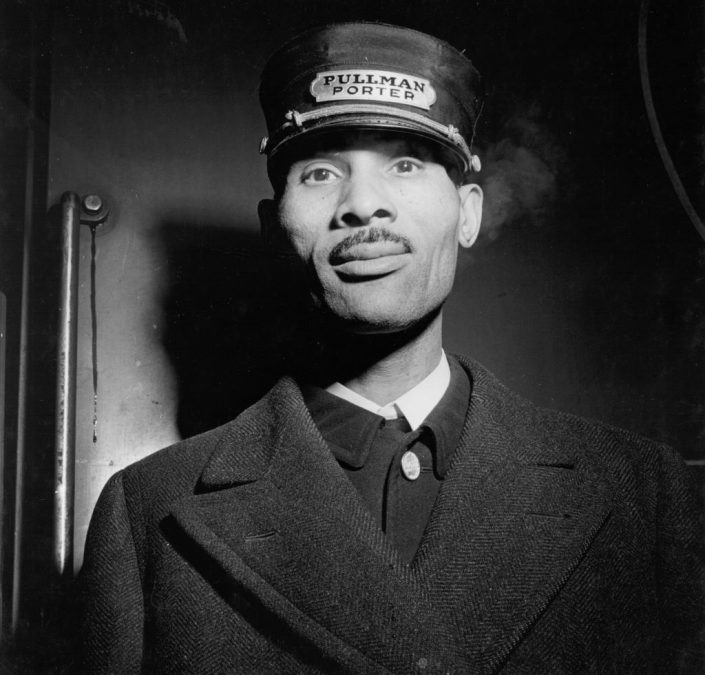
A Pullman porter, photographed in Chicago in 1943. (Jack Delano / Library of Congress via Wikimedia Commons)
Fortunately for Crosswaith, a compelling new campaign cropped up just as the TUC was folding: the epic fight to organize the Brotherhood of Sleeping Car Porters (BSCP), which had been launched by his good friend and comrade A. Philip Randolph.
In 1925, Crosswaith spoke at the porters’ first rally at Harlem’s Ellis Hall; the following August, he was elected secretary of the Brotherhood’s executive committee. Throughout 1927 the black socialist proved to be an invaluable speaker for the porters’ cause, touring the country and winning support among other unions and progressive organizations. Randolph later recalled, “He was priceless because he was one of the best speakers we had: the best orator, not only in the union but . . . in the country.”
Crosswaith, though, would not stay long with the Brotherhood. He suspected that the union’s treasurer was stealing money and demanded an audit. Unable to resolve the issue, he left the Brotherhood in 1928. He never blamed Randolph or suspected him of any wrongdoing, and they maintained good relations. Crosswaith was still tapped for specific projects throughout the rest of the Brotherhood’s campaign. (The union finally won recognition from the Pullman Company in 1935 and secured its first contract two years later.)
By the late 1920s, Crosswaith had established himself as a leading figure both among black people and the local labor movement. But his efforts to merge these two worlds into a powerful movement remained frustrated.
Black Workers and the Socialist Party
Undeterred, Crosswaith continued to immerse himself in Socialist Party work and spearhead efforts to strengthen their appeal to black workers.
After a period of membership decline in the mid-1920s, the Socialist Party began to grow again by the end of the decade. The years from 1929 to 1934 marked Crosswaith’s most intense stretch of party activity. He continued to dazzle as an orator and was often dispatched on long speaking tours recruiting for the party.
Alfred Baker Lewis, the Socialists’ general organizer in New England, said of the now-seasoned organizer: “I know of few if any speakers in the party who can rouse their hearers to such enthusiasm as he can.” Party activist William Stone praised Crosswaith for reviving a Socialist Party local in Louisville following a trip there.
Crosswaith’s speaking engagements — often at black churches and YMCAs — drew the largest black turnout the party had ever seen. After a meeting in Denver, Stone joyfully declared, “Frank has won for the Socialist Party a complete entree into the Negro world in Denver, in both high and low places, as well as an unexcelled opportunity for party propaganda in the Negro press out here.” In Los Angeles, Crosswaith organized a black local for the party that included “an editor of the largest Negro newspaper on the Pacific.” In Pennsylvania, he spoke to black mining communities.
Crosswaith argued that the party must craft its appeal to black workers in a way that recognized the brutal impact of racism without wavering in its commitment to interracial working-class solidarity.
In October 1929 Crosswaith wrote to Socialist Party leader Clarence Senior: “our party must take into consideration the fact that the Negro has become alarmingly race conscious, and therefore any instrument that we intend to utilize in our work must be chosen with an appreciation of this psychological fact.”
He went on to explain that the party’s role was to channel this discontent into support for class-based politics: “Our immediate task is to temper this racial consciousness, and through agitation, education, organization and cooperation turn it into a class and social consciousness.”
Crosswaith proposed a list of actions the party could take to bolster its standing with black workers: creating a press service for black newspapers; building relationships with black newspaper editors; holding a series of public forums in black neighborhoods on topics like “Old Age Pensions and the Negro Worker,” ‘The Economic Basis for Race Prejudice,” and “Imperialism and the Colored Worker.” Unfortunately, the suggestions fell on deaf ears.
Nevertheless, Crosswaith was back on the campaign trail come 1930, serving as usual as the party’s congressional candidate to represent Harlem. His ten-point platform foreshadowed the kinds of policies that would become a regular feature of the New Deal–Civil Rights coalition: an anti-lynching bill, the eight-hour workday, old-age pensions, and legislation to stop the use of injunctions against labor unions. He also campaigned on reducing the military budget and putting that money toward public education.
The Negro Labor Committee
After focusing on party politics for several years, Crosswaith found his way back to the labor movement and renewed his efforts to bring black workers into unions. In 1934, he got a job with the International Ladies’ Garment Workers Union (ILGWU) as a general organizer. The ILGWU leadership was filled with Socialist Party stalwarts, which meant the union could serve as an institutional ally for his initiatives.
Crosswaith could not envision being a socialist activist without a deep immersion in the existing labor movement. In a 1935 speech, Crosswaith declared:
The Socialist in the trade union is not a sectarian making political capital for a sect but one whose interests are the interests of the working class and one who understands that every step forward in the growth, the self-confidence, the political consciousness of the working class, no matter how small, is a step toward a worker’s world.
In late 1934, he convinced the Twenty-first Assembly District local to help form the Negro Labor Committee (NLC). The aim of the new Crosswaith-led group mirrored that of the now-defunct TUC: to foster organizing among black workers.
This time, however, the organization garnered more labor buy-in. In July 1935, NLC convened a conference featuring representatives from seventy union locals, as well as civil rights organizations like the NAACP and the Urban League (which, amid the Great Depression, were shifting toward a more pro-labor orientation). Randolph was elected to the executive committee, as were others from ILGWU.
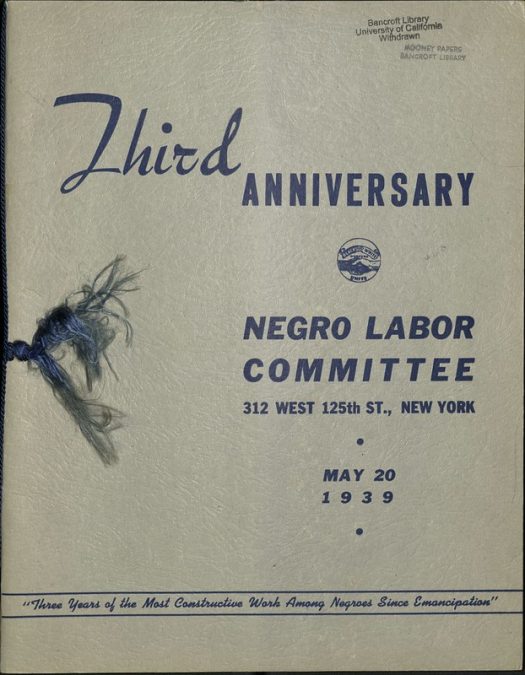
Yale Law Library / Flickr
The NLC established working relationships with unions such as the Building Service Employees International Union, the Boot and Shoe Workers’ Union, the Dining Car Employees Union, and the International Laundry Workers Union. Its first substantial campaign involved a strike of editorial workers at the New York Amsterdam News, a black newspaper.
Just as he did with the TUC, Crosswaith acted as a broker between black workers and unions. At one point, for instance, he was approached by black clerks trying to join the Retail Hat and Furnishing Salesman’s Union. The local kept its initiation fees to exclude black workers. Crosswaith met with the local’s officials and convinced them to bring down the membership fee. Even better, he got the union to accept the membership of black graduates of a job-training program for black clerks being run by the Harlem YMCA.
The NLC’s flurry of activity was enabled by the rise of the Congress of Industrial Organizations (CIO), the new federation of industrial unions that attempted to bring workers of all races into labor’s ranks. The NLC positioned itself as a resource for both the existing AFL unions and the new CIO ones (which had scores of Communist organizers). Crosswaith experimented with organizing all kinds of workers, from barbers and ash-cart laborers to newsstand employees and stove renovators.
Crosswaith was sometimes hampered by a reflexive anti-Communism that was reinforced by bad personal experiences. During the campaign to organize the sleeping car porters, Communists had virulently attacked the Socialists Crosswaith and Randolph in a bid to discredit the effort. As an ILGWU organizer, Crosswaith had a front-row seat to the factional infighting of Communist organizers. He never trusted the Communist Party’s motives, despite their often-impressive record of fighting for racial justice in the United States.
In 1938, when Communists launched a New York City campaign to open up employment opportunities for black workers — building on the “Don’t Buy Where You Can’t Work” campaigns of the mid-1930s — Crosswaith remained distant from the endeavor, dismissing it as a Communist power grab.
Such anti-Communism remained an unfortunate obsession of Crosswaith for the rest of his life. He saw with absolute clarity the antidemocratic shortcomings of the Communist Party. He was less willing to acknowledge its significant achievements compared to his own Socialist Party, particularly among black workers.
Crosswaith’s Later Years and Legacy
In the early 1940s, as Randolph’s March on Washington Movement gained steam, Crosswaith reached the zenith of his political influence. He was part of the early planning committees and encouraged the NLC to endorse the effort, which was aimed at ending discrimination in defense production and segregation in the military. It was fitting that Crosswaith’s appointment to the New York City Housing Authority was announced at the massive MOWM rally in June 1942.
As his star was rising, Crosswaith was growing more distant from the Socialist Party. The New Deal’s success in delivering working-class gains, along with increased factionalism in the party, triggered a long decline in Socialist Party membership. And as World War II continued, Crosswaith found himself at odds with the party’s pacifist position.
In May 1940, he officially broke with the party, writing, “I am deeply convinced that the outcome of the present war will determine whether the labor movement and political democracy will survive or perish.” Crosswaith would always remain a socialist but could not continue to carry the Socialist Party banner, as he went on to explain: “In my loyalty to Socialism and to my Socialist working class comrades and brothers of Europe and of the world, I am compelled to request that my name be dropped from the Party membership.”
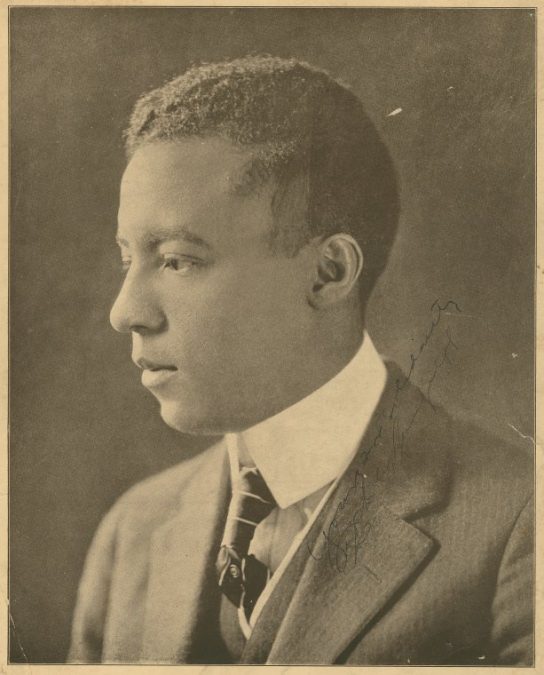
A. Philip Randolph, socialist, labor leader, and cofounder of the Brotherhood of Sleeping Car Porters. (New York Public Library)
Crosswaith kept the NLC alive, but the organization failed to develop new leadership and was running out of financial support. Factional disputes between Communists and anti-Communists limited the amount of involvement and support coming from the CIO. Though a shell of the organization remained, the NLC was never able to recreate the momentum it had attained in the late 1930s and early 1940s.
Crosswaith served on the New York City Housing Authority board from 1942 to 1958, the only black member throughout that period. On the board, Crosswaith was the most active and outspoken when it came to discrimination. At a 1955 housing conference in Washington, DC, he boasted, “With seventy-four projects now in operation, I am proud that we can say there is not a single one occupied exclusively by Negroes, not a single one occupied exclusively by whites.”
Recognizing that labor unions were not the only area where black people could make progress, he wrote for the NYCHA bulletin in 1955, “These housing programs represent one of the most important gains in the Negro’s struggle for equality since the Civil War.”
He remained an active member of the labor–civil rights coalition that he helped construct, acting as chairman of Randolph’s Youth March for Integrated Schools in Washington, DC, in 1958. Until his death on June 17, 1965, Crosswaith always asserted that black people could never have true freedom with economic liberation.
By the time of the 1963 March on Washington for Jobs and Freedom, the support and involvement from organized labor would not have come as a surprise to activists living at the time. However, that deep connection between the labor movement and black workers could not have happened without figures like Frank Crosswaith.
Through talent and sheer force of will, Crosswaith pioneered the early organizational links that would become critical to the success of the civil rights movement. His life’s work should not be forgotten by those trying to build an interracial working-class movement today.
Paul Prescod is an organizer with Teamsters for a Democratic Union and Jacobin contributing editor.
Subscribe to Jacobin today, get four beautiful editions a year, and help us build a real, socialist alternative to billionaire media.

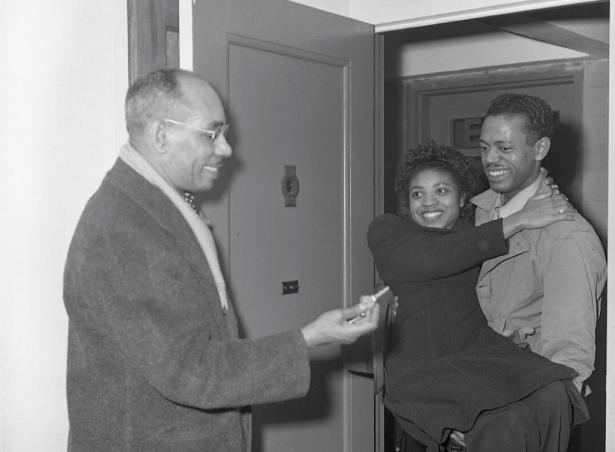
Spread the word